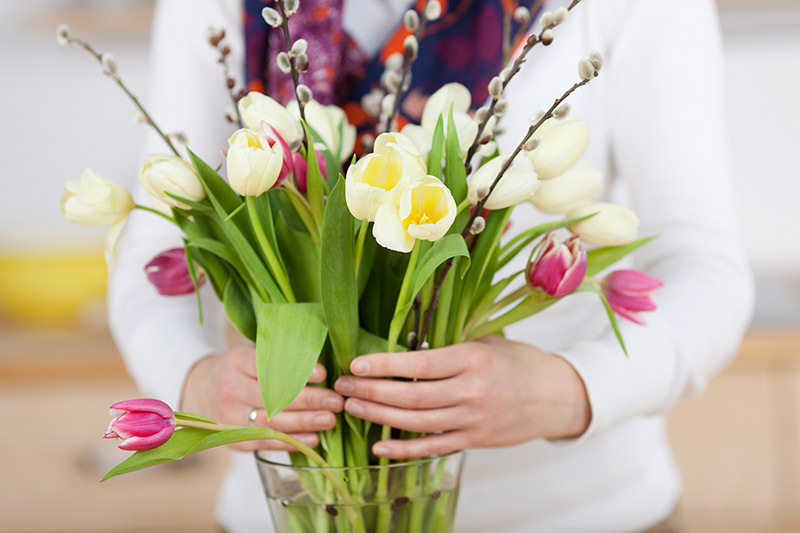Exploring the Cultural and Colorful Significance of Peonies
Posted on 13/08/2025
Introduction: The Allure of Peonies Through Time
Peonies are some of the most beloved flowers in the world, celebrated not only for their lush blooms and dazzling colors, but also for their rich symbolism and historical ties to cultures across continents. From ancient China to modern-day wedding bouquets, the peony has woven its way through art, literature, festivities, and the hearts of flower enthusiasts for centuries. In this comprehensive guide, we'll dive deep into the cultural and colorful significance of peonies, exploring their origins, meaning, use in different societies, and the vibrant color spectrum that adds to their unmistakable charm.

The Origin and Botanical Overview of Peonies
Peonies, botanically known as Paeonia, belong to the family Paeoniaceae. These perennial plants are native to parts of Asia, Southern Europe, and North America, with the majority of species found in China. There are around 33 known species, split between herbaceous peonies (which die back in winter) and tree peonies (woody shrubs).
- Herbaceous peonies: These are the most widely cultivated, blooming in late spring and early summer.
- Tree peonies: Larger and woodier, producing larger blossoms and capable of living for decades.
- Intersectional (Itoh) peonies: Hybrids that combine the best qualities of both herbaceous and tree peonies.
The peony's beauty is matched by its remarkable longevity; some peony plants have been known to thrive for over 100 years! This resilience, combined with their flamboyant blossoms, has cemented the peony flower's significance in numerous cultures.
Peonies in Global Cultures: Symbolism and Influence
Peonies in Chinese Culture: The 'King of Flowers'
In China, the cultural importance of peonies is unrivaled. Regarded as the national flower and called the "King of Flowers" (Mudan), peonies symbolize wealth, prosperity, dignity, and honor. Their opulent blossoms adorn paintings, textiles, ceramics, and even traditional festivals.
- Historical roots: Peonies have been cultivated in China for more than 2,000 years. They were cherished by emperors and featured in imperial gardens.
- Significance in art: Chinese brush paintings often depict peonies, representing social status and beauty.
- Peony festivals: Each spring, cities like Luoyang and Heze host vibrant peony festivals, attracting millions of visitors who view the blooms as auspicious symbols of good fortune.
The peony's prominence extends to Chinese literature and poetry, where it is revered as a symbol of feminine beauty--its lush petals often compared to delicate skin, encapsulating both grace and strength.
Peonies in Japanese Culture: Elegance and Timelessness
The symbolic meaning of peonies in Japan shares similarities with China, where the flower stands for wealth, honor, bravery, and good fortune. In Japanese art, the peony is a frequent motif in kimono patterns, lacquerware, and traditional woodblock prints. Samurai often adopted the peony as an emblem, reflecting nobility and a fighting spirit entwined with elegance.
- Festivals: Japanese gardens frequently feature "botan" (peony) festivals where families celebrate the flower's short-lived but spectacular bloom.
- Tattoo symbolism: Peonies have become popular in irezumi (traditional tattoos), symbolizing both strength and beauty.
In both Chinese and Japanese cultures, the peony's allure lies in its juxtaposition of fleeting beauty with enduring status, making it a symbol not just of good fortune, but also of life's transience and the appreciation of the present moment.
The Peony in Western Traditions
While Asia has the longest and most intricate relationship with peonies, these flowers are no less treasured in Europe and North America. In the Victorian era, peonies signified bashfulness and compassion. Over time, their robust, dramatic blooms became popular choices for garden landscapes and celebratory events.
- Weddings and romance: In Europe and America, peonies symbolize romance, a happy marriage, and are frequently featured in bridal bouquets for their fullness and exquisite fragrance.
- Traditional medicine: Both European and Chinese herbalists have used peonies for centuries in folk remedies.
- Art and literature: Western painters and poets, including Renoir and William Carlos Williams, have immortalized peonies as emblems of beauty and renewal.
The cultural value of peonies continues to thrive in the west, where they are cherished for their visual impact, emotional resonance, and enduring sophistication.
A Kaleidoscope of Color: The Peony's Palette
Understanding the Rainbow of Peony Colors
One of the main attractions of peonies is their astonishing range of colors and varieties. From soft blushes to electric corals, peonies present a mesmerizing spectrum. Each peony bloom color carries its own unique charm and symbolic meaning:
- White Peonies: Represent purity, innocence, and a fresh start. Popular in wedding ceremonies and spiritual arrangements.
- Pink Peonies: Signify romance, prosperity, and happy relationships, making them a top choice for Valentine's Day and anniversaries.
- Red Peonies: Embody passion, respect, honor, and are often used in festivals and celebrations of success, especially in Asian cultures.
- Yellow Peonies: A symbol of new beginnings, happiness, and optimism. Perfect for congratulatory gifts and joyful occasions.
- Purple and Coral Peonies: Denote mystery, luxury, creativity, and devotion, infusing arrangements with a regal or unique touch.
This vivid diversity of shades enhances the universal appeal of peonies. Gardeners and florists alike prize the flower for its ability to fit a broad range of color schemes and emotions.
Peonies in Art, Fashion, and Contemporary Culture
The Peony's Timeless Motif in Creative Expressions
Beyond the garden, peonies flourish in countless artistic and cultural forms. Their sumptuous blooms inspire:
- Fine arts: From ancient Chinese scrolls to Impressionist canvases, the peony appears as a muse for artists expressing luxury, nature's bounty, and emotional depth.
- Fashion and textiles: Modern designers incorporate peony motifs in fabric patterns, jewelry, and accessories to evoke elegance and femininity.
- Home decor: Peony themes are prominent in wallpapers, dinnerware, and even contemporary interior design trends, celebrated for their timeless grace.
- Perfumes and fragrances: The sweet, rosy scent of peonies is a key note in high-end perfumes and skincare.
The use of peony imagery across visual and decorative arts underlines the flower's status as a symbol of beauty and opulence. Its associations with femininity, romance, and artistry make it an enduring cultural icon.
Peonies and Modern Events
The contemporary significance of peonies extends to numerous events and celebrations:
- Mother's Day: Pink and white peonies are favorite gifts that symbolize gratitude and maternal love.
- Weddings: The full-bodied blooms are often chosen for bridal bouquets, centerpieces, and symbolic floral arches, conveying wishes for a fruitful, happy marriage.
- Anniversaries and celebrations: Given their lasting nature, peonies are a traditional gift for 12th wedding anniversaries, signifying honor and enduring romance.
In all these settings, the rich colors of peonies deepen the sense of occasion, creating a festive and meaningful atmosphere.
Growing and Caring for Peonies: Bringing a Living Symbol to Your Garden
Tips for Cultivating Peonies
For those looking to imbue their own gardens with the cultural and colorful allure of peonies, here are key guidelines for successful planting:
- Location: Choose a spot with full sun (at least 6 hours per day) and well-drained soil.
- Planting season: Autumn is ideal for planting bare-root peonies to establish strong roots.
- Depth and spacing: Plant the root buds about two inches below the soil surface and provide plenty of space for air circulation.
- Watering: Water deeply but infrequently, avoiding waterlogged soil which can cause root rot.
- Patience: Peonies can take a few years to begin blooming abundantly, but their longevity pays back the wait many times over.
Once established, peonies require minimal care and can reward gardeners with decades of breathtaking blooms and a living connection to centuries-old tradition.

Peonies in Holistic and Wellbeing Traditions
Medicinal and Therapeutic Use of Peonies
Beyond ornamental value, peonies have earned a place in the world of traditional medicine:
- Chinese herbal medicine: Both the roots and the blossoms of certain peony varieties (especially Paeonia lactiflora and Paeonia suffruticosa) have been used for treating inflammation, pain, and skin ailments for millennia.
- Western herbal remedies: In Europe, peonies were thought to ward off evil spirits and used in infusions for calming the mind.
While modern science is still exploring the efficacy of peony-based remedies, the enduring belief in their healing properties underscores the multifaceted significance of this flower--blending beauty, culture, and wellness.
Conclusion: The Lasting Magic of Peonies
The cultural and colorful significance of peonies spans continents and centuries, making them more than just beautiful garden specimens. They are vibrant emblems of romance, honor, prosperity, and life's fleeting beauty. From their honored place in Chinese imperial tradition to their status as coveted cut flowers and symbols of love in the West, peonies continue to inspire awe and affection worldwide.
By planting or gifting these remarkable blooms, you're not only embracing their dazzling colors but also participating in a rich legacy of meaning and symbolism. Whether you're drawn by their history, their vibrant hues, or their lush scent, peonies offer a timeless celebration of nature's artistry and human culture.
Let the peony's colorful significance inspire your garden, your celebrations, and your appreciation for the deeper connections between people and the natural world.







